Jean Rapp
Count of the Empire
Pronunciation:
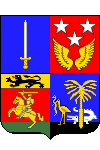
Jean Rapp is an Alsatian from Colmar, where he was born on April 27, 1771, the fourth of ten children, into the household of Jean Rapp and Catherine-Salomé Edighoffen, both from old bourgeois families in the town.
His father, an honorable button-maker, was also a municipal civil servant and ran a customs office, which has earned him the title of "concierge" in many biographies of his son.
His Lutheran parents wanted him to become a clergyman, so Rapp followed a solid secondary education, during which he met Jean-Baptiste Kléber. But the turbulent and extraordinarily strong young man, whose two uncles served in the royal army, ended up choosing a military career. At the age of seventeen, in March 1788, he enlisted in a cavalry regiment, the chasseurs des Cévennes, stationed near Colmar.
Although he distinguished himself by his intrepidity and wounds, it was not until April 1794 that he was elected second lieutenant and then lieutenant. A year later, in May 1795, he was seriously wounded by several sabre blows to the head and left arm, and the time had come for him to retire. It was then, however, that his career really took off: an uncle (another one) got him an assignment as provisional aide-de-camp to general Louis Charles Antoine Desaix (December 19, 1796).
Under Desaix, he first defended the fort at Kehl, where he suffered another wound, a gunshot wound to the right knee. In May 1797, his posting with Desaix was confirmed, and he was promoted. A few months later, Captain Rapp accompanied his commander to Italy, where he met Napoleon Bonaparte at Passariano, near Campo-Formio.
Desaix then took his aide-de-camp to Egypt. Rapp made the crossing on the frigate La Courageuse, where he met Gaspard Monge and Dominique Vivant-Denon, both of whom he endeared to. Present at all the battles (Malta, Alexandria landing, battle of the Pyramids), he shone through his courage and determination. At Sédiman, on October 8, 1798, he was appointed squadron leader after seizing the Turkish artillery with his men. On the following January 22, at Samahoud, a new wound soon earned him the rank of brigade commander (colonel, February 15). After Napoleon Bonaparte's departure, he acted as liaison between Kléber and Desaix during the negotiations preceding the El-Arish armistice (January 28, 1800).
Taken prisoner by the English on March 4, 1800, along with Desaix, on the brig that was taking them back to France, he was freed on April 29, and rejoined the Army of Italy on June 11, only to see his leader and friend die on the 14th, at Marengo (the same day, he lost another comrade, in Cairo, with the assassination of Kléber).
Bonaparte appointed him aide-de-camp, a title Rapp kept until 1814. The First Consul took a liking to this placid young man, whose free-spiritedness was matched by his solid common sense.
In the years that followed, Jean Rapp was entrusted with a wide variety of tasks: fact-finding mission to the Vendée (July-August 1800); organization and command of the Mameluke squadron (1801) in Marseille, then at the Tuileries; missions to Switzerland (1802, 1803), Belgium (1803), Hanover and the mouths of the Elbe (1803); mission to Toulon with Ganteaume, maritime prefect (1803-1804); tour of Luxembourg with Napoleon in 1804; investigation into the discontent of the Guard, the same year.
On August 29, 1803, Rapp was appointed brigadier general; on June 14, 1804, he became Commander of the Legion of Honor; on March 28, 1805, he married Rosalie-Barbe-Josèphe Vanlerberghe, fourteen years old and with a million-dollar dowry.
1805 saw a return to the battlefields. At Austerlitz, at the head of his mamelukes, Rapp charged and routed the cavalry of the Russian imperial guard . Wounded, he was mentioned in the Grande Armée bulletin and promoted to major general (December 24, 1805).
After the wedding festivities for his friend Prince Eugène de Beauharnais (January 14 and 15, 1806), Rapp spent the first months of 1806 on various inspection missions in Germany, after which Napoleon I appointed him to command the 5th military division in Strasbourg (July 6). He did not stay long. On September 29, he received the order to set off. The Prussian campaign begun. By the end of October, he was in Berlin, leading the search for the King of Prussia's treasures.
The Polish campaign, which immediately followed, saw him shine with the destruction of General Mikhail Fedotovich Kamensky's Russian cavalry (December 24) and the capture of Golymin (December 26). Once again seriously wounded in the arm during this last feat of arms, Rapp - who holds the record for most wounds sustained by a general, as does Oudinot for marshals - refused to have his arm amputated.
Appointed governor of Thorn and, on May 28 1807, of Danzig, a position to which the Emperor declared he attached great importance, Rapp showed a moderation in these posts that Napoleon did not appreciate. But the imperial discontent did not move his phlegmatic aide-de-camp, especially as this bad temper had no negative effect on the stream of favors Rapp was granted: the title of Count of the Empire (January 28, 1809) and considerable endowments.
In early 1809, Rapp joined the army for the Austrian campaign. His actions were decisive at Aspern-Essling, where he re-established the situation at the head of the fusiliers de la Garde. It was no less decisive on October 12, at Schönbrunn, when he prevented the assassination of Napoleon by Friedrich Staps.
In June 1810, Jean Rapp resumed his command in Danzig, after spending several months in Paris unable to take part in Napoleon and Marie-Louise's wedding festivities due to illness. In August, he was made Grand Officer of the Legion of Honor, which, together with the Iron Crown he had received in 1807, the Grand Crosses of the Orders of the Lion of Bavaria, the Military Merit of Maximilian Joseph, the Order of Fidelity of Baden, the Order of the Two Sicilies, later the Order of Reunion (April 3, 1813) and the posthumous rank of Commander of the Order of Saint-Louis, made him one of the most highly decorated soldiers of his time.
Shortly before the French invasion of Russia, Napoleon I commissioned him to write a report on the state of mind of the Germans. The Governor of Danzig, unconcerned about stirring up imperial discontent once again, unabashedly announced that any failure of the expedition would immediately lead to the defection of the German princes allied with France.
Rapp, who was reproached by Napoleon for no longer wanting to go to war and who agreed, nevertheless followed his sovereign to Russia and received four wounds in an hour and a half at Borodino, bringing his total to twenty-two. Barely recovered, he again saved Napoleon's life by repelling a Cossack attack at Gorodina on October 25. During the retreat, he fought in the rearguard alongside Marshal Michel Ney, earning another wound at the Battle of Berezina (November 28). On December 5, the Emperor announced his departure for Paris and sent him back to Danzig [Gdansk].
Locked in the city, Rapp and the 32,000 men of the X Corps, of which he had just been given command, endured a siege lasting almost a year. When they surrendered to the Russians on January 1, 1814, the governor of Dantzick had less than 6,000 soldiers left. All of them, along with their general, were taken to Ukraine and interned, in defiance of the terms of the capitulation.
Bonaparte's former aide-de-camp returned to Paris in July 1814 and rallied to King Louis XVIII, who conferred on him the title of chevalier de l'ordre de Saint-Louis and the grand-croix de la Légion d'honneur. In March 1815, Rapp was given command of the 2nd Corps, designed to stop Napoleon. But his soldiers refused to fight. Rapp accompanied the King to Ecouen, returned to Paris, placed his troops at the disposal of the Ministry of War, then, after a meeting with the Emperor at the Tuileries on March 22, resumed his duties with him.
Placed at the head of the 5th observation corps (renamed the Army of the Rhine on April 16), as well as the 5th military division, Rapp arrived in Strasbourg on April 7, 1815, and was immediately rewarded with the title of Peer de France on June 2. He also found time to be elected to the Chamber of Representatives (May 13).
When hostilities began, despite the weakness of his forces in the face of those of the Allies, he took the offensive as soon as he heard the news of the victory at Ligny (June 16). However, the news of the defeat at Waterloo forced him to fall back on Strasbourg, which he did in good order and not without some local successes. On June 29, the city was captured, but Rapp did not give in until July 22, well after the abdication, out of a desire to keep Alsace in France.
Rapp took advantage of his inactive status to remarry on January 12, 1816 (he had divorced his first wife in 1811). Louis XVIII appointed him to the Chambre des Pairs in 1819; in 1820, he made him his first chamberlain and master of his wardrobe.
Jean Rapp died in Rheinwiller, Baden, on November 8, 1821, of cancer of the pylorus (called squirre in those days). He is buried in Colmar's Ladhof cemetery.
"Jean Rapp (detail of an equestrian portrait)" by Louis Francis Lagrenée (Paris 1724 - Paris 1805).
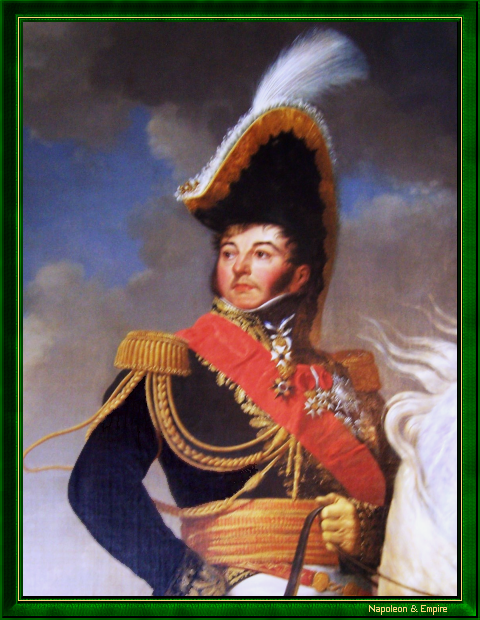
Throughout his career, Rapp remained outspoken, never hesitating to contradict Napoleon on occasion.
Thus, after the signing of the Concordat, Bonaparte said: You'll go to mass now
. Rapp replied: No, my general. It's good for you. Besides, as long as you don't appoint those people [the priests] your aides-de-camp or your cooks, I don't care
.
Similarly, after the battle of Golymin, the Emperor came to see him. Well, Rapp, you're wounded again, and still in the wrong arm. - No wonder, Sire, always battles
.
At Danzig, shortly before the Russian campaign, Napoleon observed: I can see that you no longer feel like going to war. - I agree, Sire
.
During the retreat from Russia, in Smolensk, Napoleon said to him: You can rest easy now, you won't be killed in this campaign. - But I could well be frozen
.
Rapp's name is inscribed on the 14th column (east pillar) of the Arc de Triomphe de l'Étoile.
The monumental statue of General Rapp in Colmar is the first public work by sculptor Auguste Bartholdi.
Other portraits
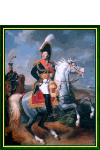
"Equestrian portrait of General Rapp" by Louis Francis Lagrenée (Paris 1724 - Paris 1805).
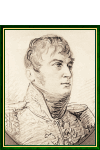
"Jean Rapp". Drawing by Francis Pascal Simon Gerard (Rome 1770 - Paris 1837).
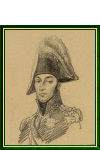
"Jean Rapp". Drawing by Matthieu Ignace Van Bree (Antwerp 1773 - Antwerp 1839).
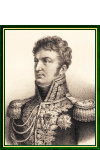
"The General Rapp". Print of the XIXth century.